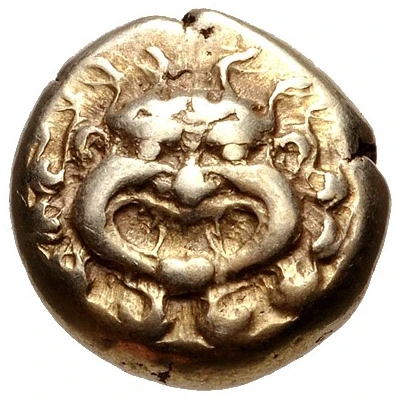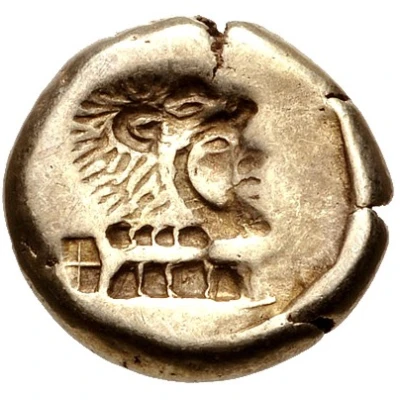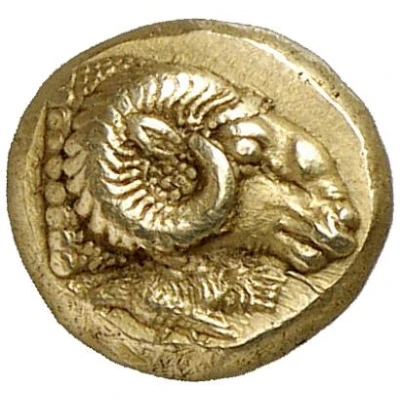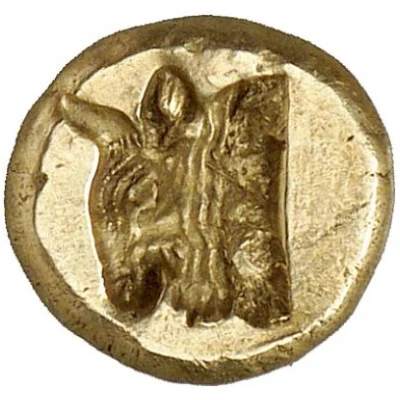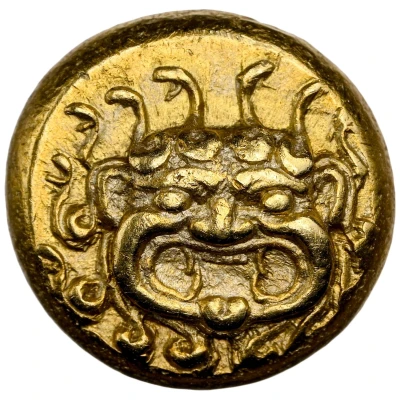
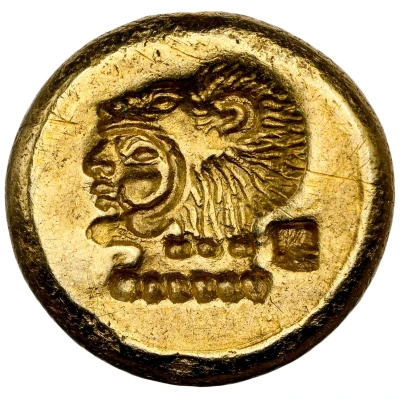

© Heritage Auctions
Hekte 521 BC - 478 BC
| Electrum | 2.55 g | 10.0 mm |
| Issuer | Mytilene (Lesbos) |
|---|---|
| Type | Standard circulation coin |
| Years | 521 BC - 478 BC |
| Value | Hekte (14⁄3) |
| Currency | Drachm |
| Composition | Electrum |
| Weight | 2.55 g |
| Diameter | 10.0 mm |
| Shape | Round (irregular) |
| Technique | Hammered, Incuse |
| Demonetized | Yes |
| Updated | 2024-10-10 |
| Numista | N#369423 |
|---|---|
| Rarity index | 100% |
Reverse
Incuse head of Heracles left, wearing lion skin headdress; neck truncation formed by two rows of small squares, four above and four below; rectangle with irregular interior surfaces behind.
Interesting fact
The Hekte coin was used as a form of currency in ancient Greece, specifically in the city-state of Mytilene on the island of Lesbos. It was made of electrum, a naturally occurring alloy of gold and silver, and weighed approximately 2.55 grams. Despite its small size, the Hekte coin played a significant role in the economy of Mytilene and was widely used for trade and commerce. Its design featured an image of a lion's head on one side and an inscription on the other, which helped to identify its value and authenticity. Overall, the Hekte coin is a fascinating piece of history that provides insight into the monetary systems and trade practices of ancient Greece.
